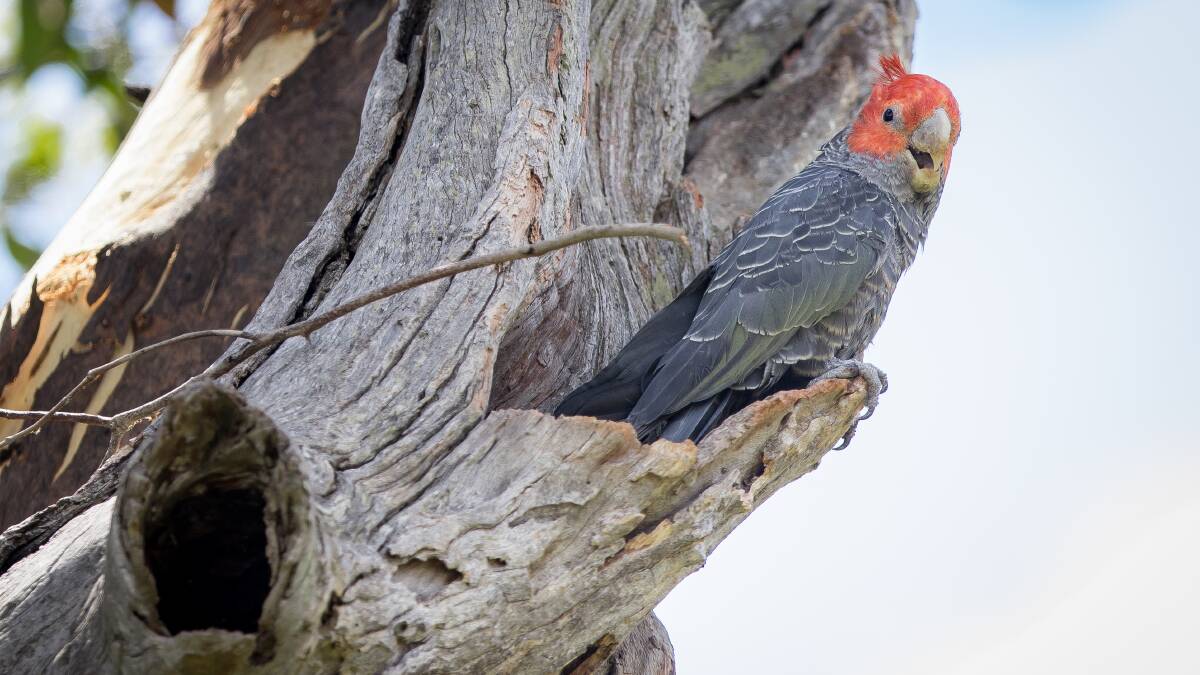
A national recovery effort is under way to help save the gang-gang cockatoo, with populations of the ACT's faunal emblem thought to have declined 70 per cent in the last 25 years.
The "rascal with the big red head" will be the focus of a joint research project under way in the ACT, the Blue Mountains and the NSW South Coast to better understand its breeding habits and threats.
The gang-gangs make their homes inside hollow trees which, thanks to the introduction of clearing protection laws, was thought to have contributed to relatively stable numbers in the ACT when compared to other jurisdictions.
While it had been estimated around 150 gang-gangs called the capital home, a team of researchers attempting to document populations in urban areas and nature reserves last spring found fewer birds than hoped.
The gang-gang is now being considered for an endangered listing after a 2021 recommendation by the Threatened Species Scientific Committee.
Coordinator of gang-gang citizen scientist group Michael Mulvaney said while everybody loved the gang gang - which came third in the 2021 bird of the year awards - not much was known about them.
Dr Mulvaney said two gang-gang chicks were lost on Canberra's two 44-degree days in 2020, so warming temperatures was a concern, but gang-gangs usually migrated to cooler places before temperatures soared.
"We've looked at 250 hollows in the ACT and in about 15 per cent we found evidence of brushtail possums, so that's another area we're trying to find out more about," he said.
"Are the brushtail possums just using the same hollows or are they predating again gang-gang chicks?"
Dr Mulvaney said gang-gang numbers in Namadgi National Park were unknown.
"They basically fly right across the ACT, but in terms of the breeding, all the nests that we know of are within 200 metres of the urban edge," Dr Mulvaney said.
The federal government has allocated $247,000 for monitoring of the gang-gangs, following the Black Summer bushfires. In total, $700,000 has been secured for gang-gang conservation.
ACT Parks' Stacey Taylor will head up the research team as part of her masters project with the Australian National University.
Ms Taylor said the national working group was made up of about 30 members who were sharing knowledge and data.
"The gang-gang is probably one of the least understood parrots in Australia. With knowledge comes a better understanding of what conservation projects we should be implementing," she said.







